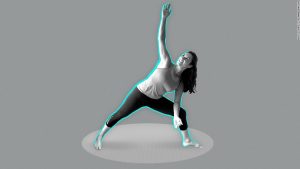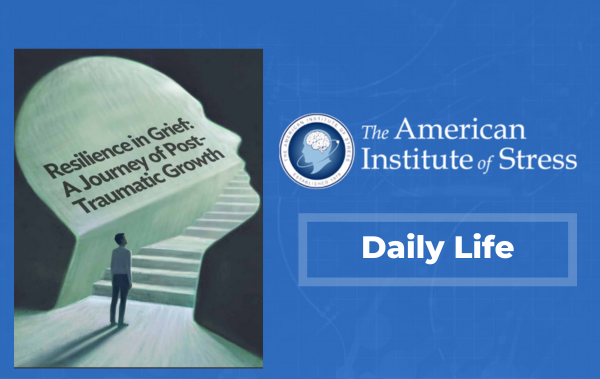 Think you don’t have time for a workout? Join Stephanie Mansour for a five-part series of five-minute workouts to get moving again.
Think you don’t have time for a workout? Join Stephanie Mansour for a five-part series of five-minute workouts to get moving again.
This is Part V.
(CNN)Do you have a pounding headache from work and family stress at home?
The US Centers for Disease Control and Prevention warns that pandemics can be stressful and cause feelings of fear and anxiety. Couple the pandemic with being cooped up at home with family while working and kids home from school, and you may find yourself with a stress headache quite often.
More than nine in 10 adults will deal with headaches at some point in their lives, according to research. While stress can be to blame, studies have said that tense muscles are often a culprit. Things like poor work-from-home posture, crouching on the ground playing with kids and even sleeping in awkward positions can lead to stiff muscles.
Tight muscles and neck pain can trigger headaches, and chronically overworked muscles — like hunched shoulders and tight trapezius muscles, or the muscles below your shoulder blades and the uppermost back muscles that run into your neck — can cause headaches, too.
That’s why for our final installment in this series, we devised this five-minute stretch routine for stress headaches to be done at least once a day to loosen up the muscles around the neck, shoulders and upper back. This neck and shoulder routine also includes specific breathing to release tension headaches.
Chin-tuck stretch
Standing or sitting, place your hands behind your head in a basket grip.
Gently drop your chin toward your chest and hug the elbows around your face.
Use the tension of your hands and arms to weigh your cervical spine down while maintaining a straight thoracic spine. Feel a stretch from the base of your skull down through your cervical vertebrae.
Side neck pull
With your head upright, reach your right hand around your head and place it on the left side of your head. Gently pull your head so that your right ear reaches down toward your right shoulder. Feel a stretch in the left side of your neck.
To intensify this stretch, bring your left hand around your back and open up the left shoulder by pressing your left hand onto your back.
Again breathing in and out through the nose, hold this for three deep breaths, and then switch sides.
Shoulder boxes
Standing or sitting, shrug your shoulders forward.
Then shrug them up toward your ears.
Next, pull them back. Finally, pull them down. You’ll be making a box with your shoulders in the shape of a square.
Perform this five times. Then reverse the box and perform five times by shrugging your shoulders backward.
Forward fold
Standing with your feet as wide as your hips, slowly fold forward, hinging at your hips. Allow your arms, head and neck to dangle down.
Reach your arms toward the floor and allow your chin to drop toward your chest. You’ll feel a stretch in the backs of your legs, but if this is too intense or if your low back is stiff, feel free to bend your knees.
Hold this pose for about a minute. You can shake your head gently “yes” and “no.”
To come out of this pose, slowly roll up one vertebra at a time with your head being the last thing to come up.
Eagle arms
While standing or sitting, outstretch your arms. Cross your right arm over your left arm, and then bend at the elbows.
Flex your wrists so that you can then press your palms together. Your forearms will be entangled and the shoulders will be forward.
Feel a stretch in between the tops of the shoulder blades like a pull along the upper back. Hold for three breaths, and then release.
Repeat with the left arm crossed over the right arm.
Bird of paradise with modifications
The final expression of this exercise is an advanced yoga pose. However, if you feel uncomfortable at any step along the way, don’t hesitate to hold the pose in the phase that feels best for your body.
To start, step into a Warrior II position. Your left foot will face to the left, and your right foot will be 4 to 5 feet away turned on a slight angle. Line up your left heel with the arch of your right foot. Outstretch the arms and bend the left knee over the left ankle.
Next, place your left forearm onto your left thigh and reach the right arm up toward the ceiling. Open the chest so that the shoulders are stacked on top of each other.
Then place the right hand along the small of your back and open up the right shoulder even more. Reach the elbow back and turn the head to the right slightly to look up toward the ceiling.
From here, wrap the left arm underneath the left thigh. Reach the hands toward each other coming into a bind. Open the chest as much as possible and use the hands to pull on each other to facilitate the opening of the chest and shoulders.
To move further into this pose, step the right foot forward to the center of your body, and slowly lift the left leg up off of the ground. Stand upright while maintaining the bind of the arms around the underside of the left leg.
Lift the left leg up. Finally, extend the left leg straight as you lift the chest and stretch the shoulders.
Wherever you find yourself holding this pose, hold for three slow breaths, and then slowly come out of the pose in the reverse of how you came into it.
If you’ve been following this five-part workout series, you’ve been incorporating each of the routines in your daily life, and if you’re just joining us now, take a look at the past articles and join us in improving quality of life, five minutes at a time:
Part I focused on how to improve sleep with a simple yoga routine in bed before turning off the lights.
If you’re feeling off-kilter, try out the balancing exercises that require both physical balance and mental focus in Part II.
If you can’t squeeze in a long workout while working from home, try out the midday workout that only requires your desk chair in Part III.
The meditation routine in Part IV is all about steadying the mind by utilizing the breath to relax the body and slow down thoughts about the future — like when will the pandemic be over, what will next year look like and so on.
If you’re still feeling tense and even suffering from a tension headache, try out the exercises in this article, Part V.
Each five-minute routine can help you face all the challenges of pandemic life feeling better physically and mentally.
By Stephanie Mansour, CNN



















